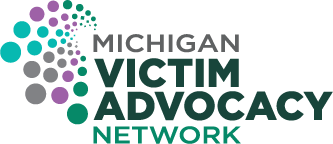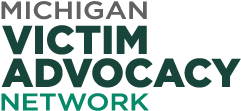Walking With Our Teens: Teen Dating Violence Awareness Month
It’s nice to feel like an expert in certain areas, or at least an experienced veteran! But when intersections come into play, we might suddenly feel like novices again. Teen dating violence is one of those intersections. Many of us work in the fields of domestic violence and sexual assault. Sometimes the populations we work with are children, and sometimes they are adults. It can be a challenging area for advocates to work in the area of teen dating violence because it can combine all of these things with added complications of complex family dynamics, neurobiology and brain development, confidentiality, the legal and education systems, and more.
There’s no way any advocate (superhero or otherwise!) could know all there is to know about all topics, populations, and intersections. Luckily, MiVAN is here to identify quality resources and trainings that shed light onto the challenging work of crime victim services. This month for Teen Dating Violence Awareness, we created a compilation of stand-out resources and trainings that provide insight into this complex topic.
Let’s learn more about supporting our teenagers and walking with them through this part of their journey. Read on to increase your knowledge about teen dating violence and supporting these survivors. And please, as always, don’t hesitate to contact us if you’re still looking for something!

Understanding Adolescent Brain Development in Teen Dating Violence Cases
March 2021
Webinar from the National Council of Juvenile and Family Court Judges (NCJFCJ)
This webinar provides an overview of how the adolescent brain develops and how trauma can affect this development such as chronic reinforcement of hyperarousal or dissociation pathways. It also talks about some of the typical experiences during adolescence (i.e. identity exploration, salient peer groups, etc.) and how those can provide areas for intervention and/or be risk factors. The webinar concludes with discussion around implications for intervention, promising programs, and how we can provide youth opportunities for learning healthy relationship skills.
If you don’t have time for a webinar or are looking for supplemental material, there is also this manual mentioned in the training.

6 COMMON TACTICS OF TEEN DATING SEXUAL COERCION
Article from StrongHearts Native Helpline
This article gives examples and situations that teens may hear from partners that may indicate sexual coercion is present in a relationship. Importantly, it talks about why each of these six common situations is wrong. This would be a great article to share with teens!

SERVING TEEN SURVIVORS: A Manual for Advocates
December 2018
Resource from National Sexual Violence Resource Center (NSVRC)
This in-depth manual is a must-read for advocates who work with teen survivors of sexual violence. It discusses the neurobiology of trauma in the teen brain, includes specific tip-sheets for advocates who hold various roles (hotlines, counseling, peer-led services, supporting significant others, referrals, accompaniment in: legal, medical, law enforcement). This manual also reviews confidentiality and mandated reporting and how to serve teenagers in a culturally responsive way. Finally, it provides research and resources for advocates to do deeper dives into these topics.
YOUTH MAGAZINE: RELATIONSHIPS | HEALTHY, UNHEALTHY, WHEN THERE IS DANGER
September 2021
Resource from National Indigenous Women’s Resource Center (NIWRC)
Written for Native teens, many of the concepts discussed (consent, signs of violence, jealousy, equality) are important for all teenagers to know. Whether used as a talking tool or given to clients, this is a great resource for discussing healthy and unhealthy relationships with teenagers!

How to set boundaries
Resource from Love is Respect
This provides an easy-to-navigate resource that touches on emotional, physical, and digital boundaries with an added bonus of how to handle conflict. Within each category, this resource:
- Offers questions for people to ask themselves to reflect on their boundaries
- Discusses why these boundaries are important in a healthy relationship
- Provides relevant links to other helpful and related reads for teens and others

Teen Culture, Dating, and Relationships in Tribal Communities Part 1
Webinar from Red Wind Consulting
This webinar focuses on the impact of intergenerational trauma and what we as providers and caring adults can do to support teenagers during this period to break that cycle. It talks about the uniqueness of youth culture and how technology can play a role in supporting teens or in perpetuating teen violence, particularly as the pandemic forced more relationships to have a more salient digital component.

